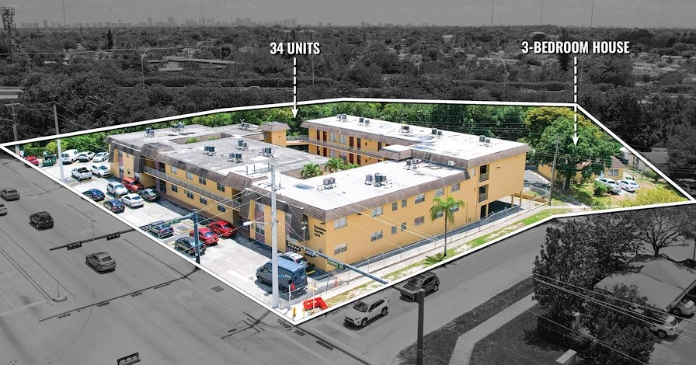Expanded to 400 pages from the three-page version that was drafted by Treasury Secretary Henry Paulson and rejected by the House on September 30, the final plan was approved 263 to 171.
The legislation gives the U.S. Department of Treasury the authority to buy bad debt mortgages from struggling financial companies at above- market prices in exchange for warrants that could be later exchanged for those companies’ non-voting stock. The government also can make direct equity investments in the firms by purchasing stock. Early estimates put the cost of the plan at around $700 billion in debt, with another $100 billion of odds and ends tacked on.
The changes made to Paulson’s original draft include limits on tax benefits and pay for executives at rescued firms, a suspension of mark- to-market accounting, which requires companies to show deflated asset values on their balance sheets, and a temporary increase in FDIC insurance coverage to $250,000 from $100,000. Also added was a one- year fix that would shield 20 million middle-income people from higher taxes, courtesy of the alternative minimum tax, business tax breaks and some incentives for investments in renewable energy.
“This legislation was absolutely essential to prevent a collapse in our financial system that would have inflicted devastating damage to our nation’s economy,” said Sandy Dunn, chairman of the National Association of Home Builders (NAHB) and a home builder from Point Pleasant, W.Va.
“Hopefully, this will set the stage for rebuilding confidence, restoring the availability of credit for businesses and consumers, and reversing the downward spiral in home prices and rising foreclosures that are root causes of today’s financial turmoil,” Dunn said.
National Multi Housing Council (NMHC) President Doug Bibby agrees that multifamily and the economy as a whole will be better off if the single-family sector is stabilized. The earlier bailouts of Bear Stearns, AIG and Fannie Mae and Freddie Mac and the buyouts of a number of other venerable financial institutions all failed to accomplish that goal.
The stock market plunged 777 points on the day the House voted down Paulson’s initial plan and, reacting to news that job losses hit their highest point in five years, tumbled another 157 points the day the final version was passed.
On October 8, hoping to stem the stock market’s free fall, the Federal Reserve slashed the Fed Fund rate, which is the rate that banks charge each other for overnight loans, to 1.5 percent. That measure should help lower rates on credit cards, auto and business loans, but likely will have little effect on mortgage rates.
Two days later, Paulson announced he would get the ball rolling on the rescue plan by purchasing stock in beleaguered financial institutions in the hopes of thawing the frozen credit markets and propping up the shaky single-family housing market.
Some pundits think paying above-market prices for bad debt will be a bad deal for taxpayers and still won’t be sufficient to convince banks to resume the intra-bank lending necessary to maintain credit availability. With direct equity investments now on the table, the U.S. Treasury debt repurchase plan could change.
One thing is certain, even if the Emergency Economic Stabilization Act does its job, calming the volatile market, more change is on the horizon. U.S. Rep. Barney Frank, (D-Mass.), a key proponent of the bill and chairman of the Financial Services Committee, said the rescue plan is just the beginning of a much larger task Congress will tackle next year–overhauling housing policy and financial regulation in a legislative effort that he compared to the New Deal.
Multifamily weighs in
Two weeks after the U.S. government announced it had seized Fannie Mae and Freddie Mac, placing them in conservator-ship, Howard Smith was halfway through a 20-minute summary of the event when he got the overwhelming feeling that the subject was ancient history.
“It has been so extensively and accurately reported in the press that it seemed the news was about a year old,” said the chief operating officer of Green Park Financial, a Bethesda, Md.-based Fannie Mae DUS lender.
The September 7 nationalization of the two mortgage giants is just one in a snowballing series of unfortunate financial events related to the subprime mortgage crisis that unhinged the credit markets, spurring an avalanche of bankruptcies, buyouts and huge taxpayer-funded bailouts of venerable financial institutions, and plunged the commercial real estate arena into turmoil.
Among multifamily players, it raised questions about the future of the two government-sponsored entities that today provide around 90 percent of the financing for apartment acquisitions and other activities and what the pair’s worst- case-scenario exit from that sector would mean.
“Fannie and Freddie own the multifamily market. If you are getting an apartment loan, you’re likely getting it from them, unless it’s a very small deal and then you are getting a loan from a local bank,” said Kyle Draeger, director of CB Richard Ellis Multifamily Capital, which became Fannie Mae’s newest DUS lender at the beginning of the year.
When Treasury Secretary Henry Paulson announced the seizure of the GSE’s, he stated that the housing correction posed the biggest threat to the nation’s economy and warned that the residential markets would not recover until the crisis is resolved.
Today, with just weeks to go before America elects its new president, the U.S. Department of Treasury is faced with determining just how to spend $700 billion of taxpayer money, as it carries out the monumental task of jump-starting a faltering economy. At the same time, blame for what is being called the greatest financial crisis since the Great Depression continues to be hurled back and forth across the partisan aisle.
But apartment REIT execs like Camden Property Trust CEO Ric Campo place responsibility for the nation’s housing problems squarely on the government’s unbalanced housing policy.
“They focused on putting everyone in a house and a chicken in every pot. As chairman of the NMHC, I’ve been involved in a lot of discussions on the Hill with people about a balanced housing policy, and it was all about ‘social responsibility,’ meaning the belief that people are more socially responsible if they own a house versus renting. As people begin to understand the mistakes of that policy, the 30 percent of Americans who rent will get a fair shake and not be ignored compared to people who own,” said Campo.
The full impact of the GSE’s nationalization won’t be known until the details of the government’s plan are worked out. “But we are optimistic there will be little to no disruption in the companies’ multifamily operation,” said National Multi Housing Council (NMHC) President Doug Bibby.
The U.S. government will invest $1 billion into the preferred stock of both Fannie and Freddie, in return for warrants to buy nearly 80 percent of the companies’ common stock for $0.00001 per share, and has pledged to purchase an unlimited amount of newly issued Fannie and Freddie debt, or equity securities, in the open market, if there are no other takers.
“But they haven’t put in a dime yet, so we don’t know how the capital will be drawn down and when. Nor do we have a clue what they will look like and act like, but in the short run, over the next 15 or 16 months, they are going to be able to grow their portfolios and serve the market as significantly as they have been,” said Bibby.
The enterprises, which have been granted access to short-term loans from the U.S. Treasury, will be allowed to post mortgage-backed securities (MBS) as collateral and are free to raise their portfolio cap by between $50 billion and $100 billion, to a total of $850 billion, until the end of 2009, when they will be required to pare down by 10 percent annually to $250 billion.
Bibby is relieved the government took a market-based approach to the seizure of the GSEs. “Under this plan they have a chance to return to profitability and pay back the taxpayer with a nice return on the taxpayers’ investment. At least that’s the hope — that they can return to profitability and be structured differently going forward.”
Although they were conspicuously silent the day after their takeover, both companies soon announced, “business as usual,” and, in a statement issued September 12, their regulator indicated the announcement applied to both the single-family and multifamily sides.
“As far as multifamily, I don’t think we’ve ever been in as strong a position as we are now. We are open for business. All I ask of you is to send us your deals,” Fannie Mae Senior Vice President of Multifamily Phil Weber told attendees at the CB Richard Ellis Capital Market client conference call on September 10.
Regarding Fannie Mae’s long-term outlook for multifamily, Weber said, “We think rent growth will slow a little in markets, but the fundamentals of our business remain very solid. We’d like to see job growth pick up, but overall supply and demand is in balance. Coming down the road is a huge demand for multifamily housing,” he said, referring to data from The State of the Nation’s Housing, an annual report issued by the Joint Center for Housing Studies at Harvard University that projects around 14.8 million new households will have been created from 2005 and 2015, compared to the one million multifamily dwellings that were built from 1995 to 2005.
“A conservative estimate is that 50 percent of those newly created households will be a younger cohort–echo boomers and new Americans that don’t assimilate to homeownership quite as fast. If we added one million units over the past 10 years and you have six to seven million in demand, then that is 5 million to 6 million of demand that won’t be met by supply, especially since multifamily construction has gotten tighter and it is still very difficult to entitle new properties,” said Weber.
Conservator-ship effect
Underwriting criteria for multifamily, which has been tightening over the past year and, for Fannie and Freddie, since June or July, likely won’t loosen in the near future. “Both GSEs have tightened their debt service coverage and LTV requirements and are looking at exit strategies a lot more than they have in the recent past, especially for shorter five- and seven-year loans. They have also cut their ability to go 75 or 80 percent for five-year loans. If considering whether they were going to loosen or tighten credit standards, I would lean toward the tighten side,” Draeger said.
Meanwhile, Freddie Mac funded nearly $700 million of multifamily loans in the week following the conservator-ship. Fannie Mae was able to raise $7 billion in its regularly scheduled sale of two-year benchmark notes on September 11, without having to pay a large premium.
“The sale was double- or triple-subscribed, and spreads came way in.
That was the first evidence that the conservator-ship and the maintained management at the operational level at Fannie Mae, and I presume Freddie Mac, are doing what they were supposed to do, and liquidity into housing is being provided. Next was our ability to lock rates. My peers are locking rates, closing loans and delivering loans.
So, in my opinion they have succeeded so far,” said Smith.
Apartment REIT execs who depend on loans from the GSEs to finance their companies’ growth welcomed the immediate positive effects of the conservatorship. Over the past several quarters, rising unemployment rates, gas and commodity prices began putting a crimp in REITs’ ability to raise rents, and widening spreads on Fannie and Freddie debt over the summer made it tough for them to obtain capital for the new development needed to grow their business.
“As of last Friday, the GSEs were still in business for multifamily, but they had limited capital and limited ability to expand their book.
Since Monday, they have a tremendous amount of capital and an expansion of their book. So, in the short term, what’s going to happen is, multifamily financing will continue to be plentiful from Freddie and Fannie. It will also be cheaper than it was before,” said Campo when he opened a round-table discussion during the BMO Capital Markets 2008 North American Real Estate Conference on September 11.
“Overnight, the cost of capital for Fannie dropped significantly. The spreads also moved down, but I would say they probably have moved back up to the same range they were in before that,” said Draeger, who expects cost reductions will get passed along more on the single- family than the multifamily side.
And, by October, those early cost-of-capital gains were looking short-lived. Eric Bolton, CEO of Mid-America Apartment Communities said, “I think capital availability from the Agencies is likely to remain strong, but clearly pricing is going to increase.” Mid-America, which borrows most of its money from Fannie and Freddie, has credit facilities in place with maturities from 2014 to 2018, and is not facing any imminent refinancing exposure.
REIT rate locks
Camden Property Trust and Equity Residential recently closed on Fannie Mae credit facilities. UDR CEO Tom Toomey has a rate sheet from Fannie sitting on his desk. “Terms are not a whole lot different than in the past. What we are seeing different though is that they are requiring amortization. They were making interest-only, now they are moving some amortization in those loans,” Toomey said.
And, during the NMHC Apartment Strategies Update on September 22, he said, “I imagine the GSEs have a tough tightrope to walk right now between rates, the housing market’s recovery and the Fed’s new oversight. Our approach to the situation is to stay in contact and not try to press for deals. It seems like right now it’s a stop-gap solution to get through this housing crisis. But it will be interesting, once we’re through this, to see what happens to Fannie and Freddie.”
Camden closed a $380 million Fannie Mae credit facility, originated by Red Mortgage Capital, on September 24th. “We had $180 million maturing from a life company. The spread differential between the quote from the life company–which wanted to keep the outstandings– and Fannie was about 20 basis points. We took the 20 basis point cheaper financing from Fannie,” he said.
The credit facility includes $205 million of 10-year, fixed-rate debt at 5.625 percent, plus one-year floating. The $175 million variable- rate portion, currently priced at 4.2 percent per annum, is for ten years. The facility is collateralized with 17 diverse properties and allows for collateral substitutions of like properties and releases upon certain conditions.
Campo believes Fannie and Freddie will dominate the apartment financing arena over the next couple of years, after which the market will revert to normalcy, where life companies and others fill the GSE void.
Equity Residential’s $550 million secured loan, which also allows for collateral substitutions, was originated by Wells Fargo. The loan is interest-only and matures in 11.5 years, with the first 10.5 years fixed and the final year floating. The all-in effective interest rate is approximately six percent and the loan is collateralized with 15 geographically diverse properties.
Keith Guericke, CEO of West Coast-focused Essex Property Trust, heard from Freddie Mac that the GSE will honor its current commitments. “We have a secured facility with Freddie of $100 million and we have a commitment for a new secured line of $250 million. It is a facility we can use as a line and is very attractive financing for us,” he said.
Guericke hopes to see some stability restored to the financial markets and the return of the unsecured market. Essex has the same ability to close on unsecured 10-year debt as its REIT peers. “The other big financing historically for us has been life companies. They haven’t been in the market recently because they are finding attractive returns elsewhere and didn’t want to lower their spreads to meet or beat Fannie and Freddie,” said Guericke.
He is confident Essex can obtain life company-secured financing at 275 to 300 basis points over 10-year Treasuries. “This morning, the ten- year Treasury was close to 3.5 percent,” Guericke said during a presentation at the Bank of America 38th Annual Investor Conference on September 15. “We can finance that into our development pipeline and create shareholder value even at those rates,” he said.
Essex currently has a $1 billion development pipeline with eight active projects valued at $622 million. Three projects are in the REIT’s Fund II, in which Essex has a 28 percent interest and acts as general and limited partner, and are financed with construction loans.
The $500 million remaining is being financed off lines of credit, which Guericke says is the company’s most effective financing source.
“Once that gets full, we go to a fixed-rate secured lender and finance it out the back end,” he said. Another source of financing for REITs is their asset portfolio. Essex has 127 assets it can sell to create liquidity.
“Thirty percent of housing in the U.S. is rental. (Fannie and Freddie) need to keep a net under us on the multifamily side, because as these folks lose their homes –and that’s not going to stop tomorrow — we are the next stop for them. A lot of us are in the (GSE) mission sweet spot — low-to-middle income — and they are making money on us. I don’t know too many CEOs or corporations that want to kick out a multi-billion dollar operation that’s making more than other pieces of their business,” said Ed Pettinella, president and CEO of Home Properties.
“The reality is that between now and December 31, 2009, we are going to originate loans and, sometime between now and then, Congress is going to rewrite what these companies do,” said Smith. Green Park Financial has completed about $1 billion this year and will probably do another $400 million to $500 million before the year is out, he said.
It will be up to the next administration to decide the future of the two mortgage enterprises. Fannie and Freddie could re-emerge as they were, or be significantly downsized, broken into several pieces to spread risk and either sold off into true private companies, without the backing of the U.S. government, or remain as government agencies similar to what Fannie Mae was when it was created in 1928.
Meanwhile, of greatest concern to apartment experts is whether or not the government’s conservatorship plan will stabilize the housing market. No one can gauge the actual cost of the plan, but, if the housing market takes too long to recover, generations of taxpayers could be on the hook. If the housing market recovers quickly, conventional wisdom is that the GSEs actually might deliver a profit to taxpayers, jump-starting the economy into recovery.
“People aren’t going to go back to consuming when they are worried about their jobs and their homes losing value. Will this arrest the home-value slide? Will that lead to more rational lending practices? Will Fannie and Freddie be able to affect that result? They can’t do a thing about jobs, but they certainly can do something about house prices,” said Toomey.
The latest projections from Fannie Mae’s Economics & Mortgage Market Analysis Group predict a 40 percent drop in single-family housing starts and a 14 percent decline in total home sales this year, with downward pressure extending through 2009.
“If Fannie and Freddie can figure a way to put enough capital to work at cheap enough prices to get people back to buying homes, not homes in over-supplied markets, but those others where things were falling, then you put one leg back under the economy,” Toomey said.















